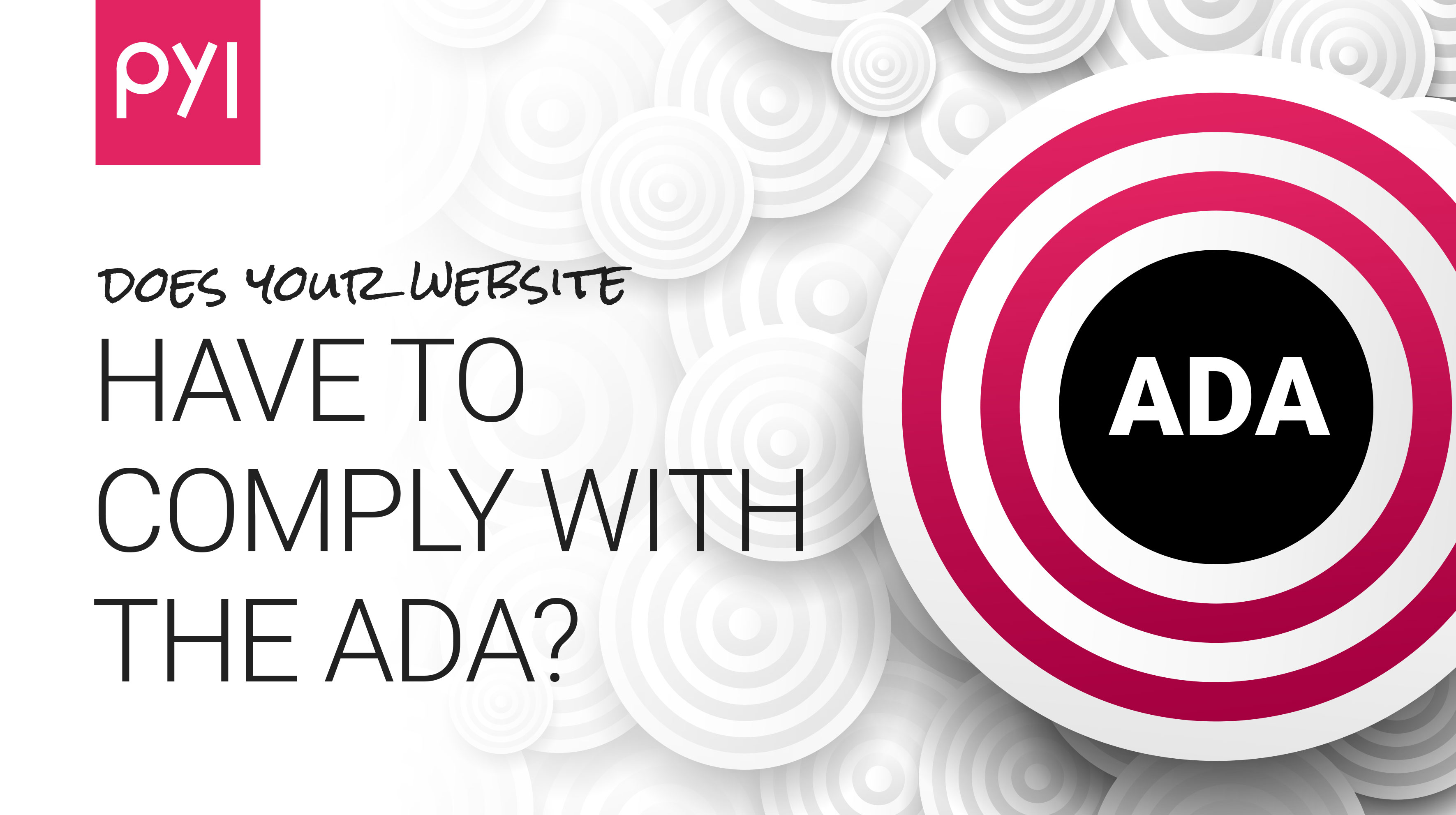What is Title III of the ADA?
The Americans with Disabilities Act is a very broad and wide-ranging piece of legislation that deals with a wide range of accessibility issues for people with disabilities. The part of the ADA that affects the way businesses serve their customers is called “Title III.”
Title III, which is enforced by the Department of Justice, prohibits discrimination against disabled people in government offices, places of education, transportation services, and public accommodations like businesses, restaurants, hotels, retail stores, parks, and daycares. In the beginning, it did not apply to websites, but since 2017, courts have concluded that websites and other online platforms also need to be accessible for people with disabilities. As of 2021, Web Content Accessibility Guideline (WCAG) 2.0 is the applicable standard.
Does Your Website Have to Comply With the ADA?
The ADA currently applies to websites for organizations and businesses that meet at least one of the following criteria:
- All government agencies at the local, county, state, and federal levels.
- Any business that relies on customers or operates for their benefit. Banks and public transportation are common examples.
- Privately run companies with 15 employees or more.
- Charitable and non-profit organizations that either have 15 or more employees or operate for the benefit of the general public.
As of now, content that was created before January 18, 2018, does not have to be made equally accessible, unless altered after that date. Bear in mind, however, that this law is like any other in that it’s subject to change without notice.
You Should Make Your Site Accessible- Even if You Don’t Have To!
Even if you aren’t legally required to maintain an accessible website (yet, anyway), there are several reasons why you should. For example:
1) ADA compliance helps you reach more potential customers. Nearly 50 million Americans have a disability, which is about 19% of the population. Even if they’re interested in your products or services, they can’t purchase anything or even contact you once they reach your website because it’s only accessible to people without disabilities. As a result, they may turn to your competitors.
2) SEO efforts are improved by ADA compliance. Websites that meet the Web Content Accessibility Guidelines (WCAG) appeal to search engines as well as web visitors, ultimately improving your SEO efforts. Image captions, meta tags, video transcripts, and other WCAG recommendations are important options to consider.
3) Following content accessibility guidelines increases website usability. By making your web pages easier to understand, everyone – disabled or not – will be able to find what they’re looking for easily. When you follow the WCAG guidelines, your website will likely convert more leads because users will trust that they can always find what they need.
How Can You Make Your Business Website More Accessible?
The ADA defines an accessible website as one that is reasonably easy for people who are disabled or using assistive technologies to navigate and engage with. There are several methods for improving website accessibility, including:
- Using header tags: Many text readers use header tags to determine how content sections on a page relate to one another. Tags like H1, H2, and H3 provide a valuable sense of context and they’re one of the easiest accessibility standards to implement.
- Using alt tags for images: They allow users who are deaf or visually impaired to read or hear descriptions of image content that would otherwise be inaccessible. Screen readers include this data in their coverage.
- Using sufficient contrast: People with certain visual impairments (e.g. cataracts or glaucoma) need sufficient contrast between foreground and background elements. This might mean black letters on a white background or vice versa.
- Making your fonts adjustable: Since people with low vision have difficulty reading smaller text, remove style sheets or controls that could prevent them from adjusting article font size. Have your web developer create a stylesheet that lets users enlarge the font without distorting the layout of the site.
- Creating transcripts for audio and video content: Making your AV content accessible via text transcripts will help those with visual or hearing impairments engage with it more easily.
- Ensuring that navigation and functionality are consistent: Your site’s pages should be predictable in appearance, operation, and navigation. This means that when a user browses your site, fills out a form, or places an order, they should be able to get the results they expect.
- Providing workarounds for input errors: People with disabilities often use assistive technologies when surfing the web, resulting in certain input errors while visiting websites. Make sure your website suggests alternative routes for them to get the information they need.
Accessibility is Simply Good Business!
When your website doesn’t follow WCAG 2.0 guidelines, it’s difficult for disabled visitors to access and use, effectively creating a barrier between your business and hundreds, maybe even thousands of potential customers. Like we mentioned earlier, ADA website compliance can also boost your SEO efforts.
To sum it up, making your website accessible will not only help lower the risk of your business facing regulatory enforcement but it can also:
- Make your website easier to find compared to your non-compliant competitors.
- Benefit from the considerable spending power of 50 million consumers with disabilities.
- Boost your image as a business that cares.
If you’re unsure where to start, consult a Florida web design agency to find out if your website is ADA compliant and what needs to be done if it isn’t. At Polish Your Image, we help businesses across Florida make their websites accessible for people with disabilities, so call (754) 222-1392 and let’s talk!






